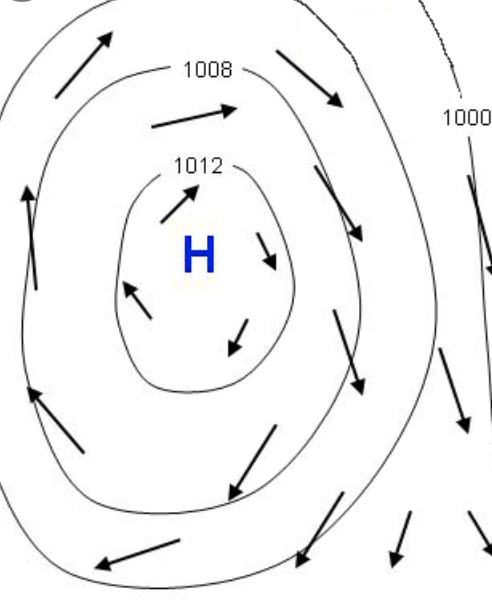The latest NOAA map of coastal water temperatures along the southern Washington coast shows temperatures above 61F (16C)...see below. Cooler water is found along the Oregon and California coasts. Much warmer water is found offshore. At Ocean Shores or Long Beach, you could almost go into the water without a wetsuit.
How do these temperatures compare to normal? Below are the anomalies (differences) from climatology (or normal conditions) of the sea surface temperatures. Warmer than normal by 2-3C along the coast and the warmth extends offshore. Cooler than normal along the California coast.Before I explain why, I wanted to mention that late August is the time of typically warmest temperatures along our coast. To illustrate, here is a plot of climatological sea surface temperatures at Ocean Shores, WA from the excellent website, Weatherspark. The typical highest ocean temperature is on August 28th at 58F, compared to the lower 60s today.
So why are water temperatures warmer than normal this year? A key issue is that the upwelling of cold water from below the surface is weaker.
And why is it weaker? Because the normal high pressure offshore has been weaker than normal during the past months.
High pressure offshore results in northerly winds (winds from the north) along our coastal zone. These winds blow on the ocean surface, and because of the rotation of the planet, this results in water currents being directed offshore. To make up for the lost water, cool water comes up from below.
High pressure offshore....known as the East Pacific High-- is associated with northerly winds along the coast (see schematic).
During the past month, an unusual area of low pressure was positioned off the Oregon coast, something shown by the difference in pressure from normal for the past 30 days found below. This resulted in weakened northerly winds, less upwelling of cooling water from below, and warmer than normal coastal temperatures.









Seems like this is more than a localized weather system since the entire north pacific is well above average at thee surface and a recent publicaton (Recent marine heatwaves in the North Pacific warming pool can be attributed to rising atmospheric levels of greenhouse gases, Communications Earth & Environment volume 3, Article number: 131 (2022) points the finger at increased atmospheric CO2 driving these recent occurrances.
ReplyDeleteThat study is very, very weak. First, it looks at too short of a period (after 1982) and fails to consider natural variability (like the PDO). And it uses an inappropriate greenhouse gas scenario (RCP8.5). Completely unrealistic. Finally, your other message was hurtful and inappropriate. If you provide a paper for me to consider, I HAVE TO READ IT. And THAT TAKES TIME. So if you don't get an instant response, there is a reason. So please...keep the name calling to yourself.
DeleteUnderstood, sorry. And, thanks for the rebuttal to the paper.
DeleteAt home on the north shore of Port Townsend, on the eastern entrance of the Strait of Juan de Fuca, we've been seeing increasing changes. Very little kelp is growing this summer. No sea birds and few gulls (eagle depredation on Protection Island is at least part of the problem), and very few "bait balls" of bait fish with screeching gulls above. We need the bait fish to feed everything including the salmon that feed the orcas. Is the warm water to blame for this die off? If there was feed, I'd expect to see sea birds. The kelp is the home and the nursery for many species.
ReplyDeleteCliff, is this mass of warmer than normal water offshore the famous "blob"? Or just unusually warm waters for other reasons?
ReplyDeleteThanks Cliff, every time the media hypes up weather events I come here for reality checks. Thank goodness for people like you, Patrick Moore, Michael Schellenberger, David Deming, and others that contribute reasoned reality to the storybook of climate change.
ReplyDelete